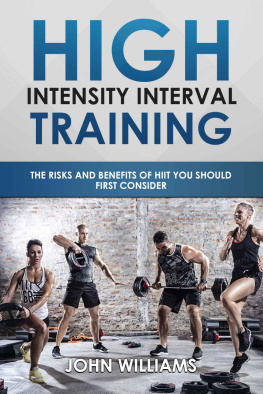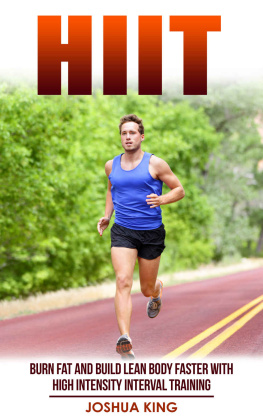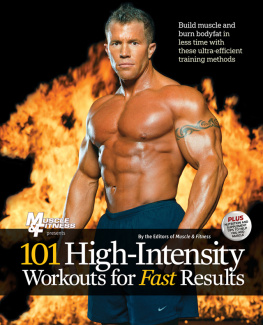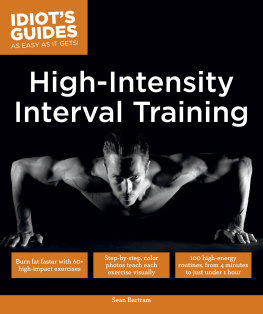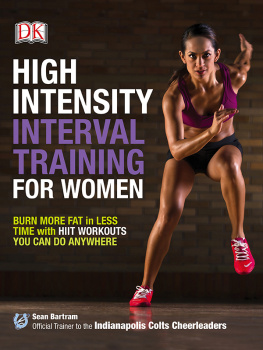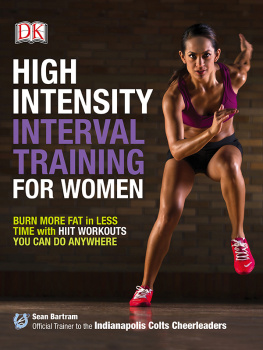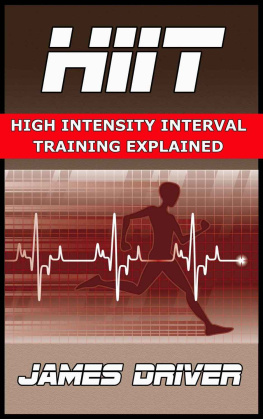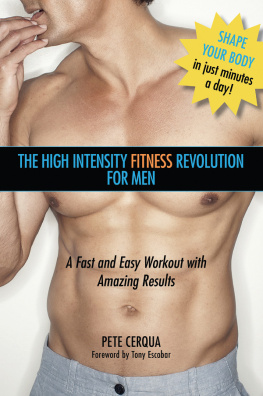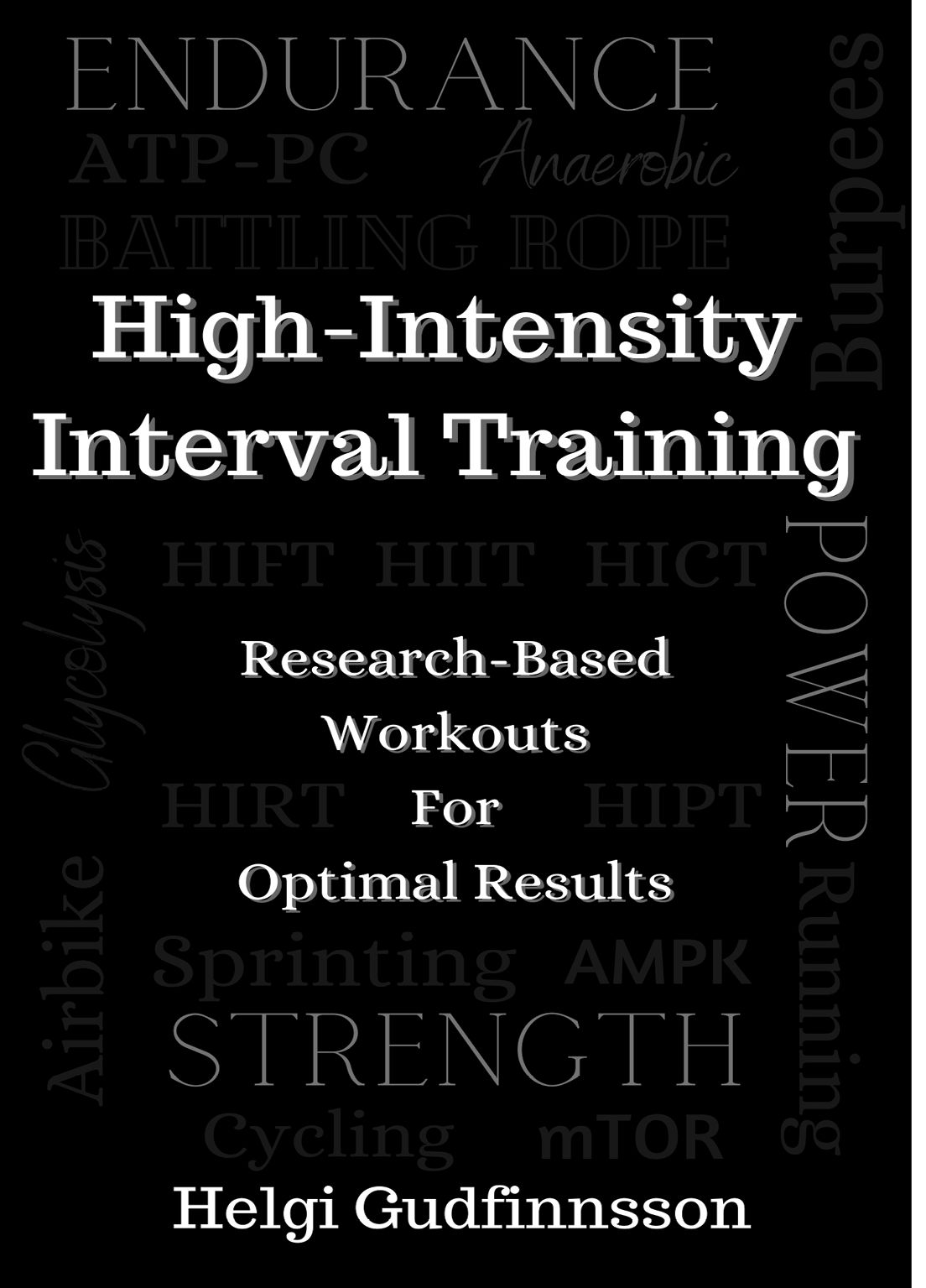High-Intensity Interval Training Research-Based Workouts for Optimal Results By Helgi Gudfinnsson 2021 by Helgi Gudfinnsson All rights reserved. No portion of this book may be reproduced or transmitted in any form or by any means. This includes fax, photocopy, recording or any information storage without the permission of the author. Disclaimer This book is not intended to provide medical advice or take the place of medical advice. Readers are advised to consult their own doctors before starting the program. The author shall not be held liable for any misunderstanding of the information in this manual or for any loss, damage, or injury caused or alleged to be caused directly or indirectly by any exercises, actions or application in this manual.
Book design: Helgi Gudfinnsson Cover design: Arnfridur Kristinsdottir For permission to reproduce any of the material, please contact: Helgi Gudfinnsson Stadarhraun Grindavik Iceland Telephone: +354-863-5255 Email: helgasport@helgasport.is Contents Introduction I never intended to become a physical trainer. It happened by accident. In 2001, when I was playing professional basketball in Europe, I needed a trainer to help me stay in shape over the summers. My hometown didnt have any trainers, so instead of driving to the next town, I decided to get certified myself. I found a few certifications and ended up becoming an ISSA-certified trainer. When I started, I was fascinated by how limited my knowledge was about strength.
That made me extremely curious about learning more about everything related to the human body and how it would respond to strength and conditioning. So, since 2001, my motto has been Never stop learning. I have traveled the world to learn from the best in the field. Ive gotten certified by the best organizations. Ive studied multiple books and courses to satisfy my hunger for knowledge. In this book, I present what I have learned in the past years and how the journey has helped me become a better trainer and more skilled at creating more effective workouts.
Why I Wrote This Book This book is for both a knowledge-seeking fitness enthusiast and a fitness fanatic lacking time to exercise. Because these two types of individuals are not similar, Ive included elements to satisfy each. For the knowledge-seeking fitness enthusiast, I have included scientific sections giving detailed descriptions of physiological changes in the body that happen with various types of workouts. For the fitness fanatic who is short on time, Ive included detailed workouts. There are four reasons why I wrote this book: I am very passionate about high-intensity interval training. I enjoy workouts that consist of short periods of intense bouts, followed by short periods of rest.
I didnt want to write a traditional or typical book about high-intensity interval training, which only focuses on HIIT and fat loss. HIIT is so much more than just a fat-loss method. I have multiple times been discouraged from including physiology in my writings because it is considered too complex and boring for most readers. However, because I find it so fascinating, I want to include it in a book. Surely, there are other knowledge-seeking fitness enthusiasts out there equally as fascinated. With profound knowledge and understanding of physiology, I firmly believe that you can gain the tools to create your own effective workouts.
From this book you will understand how the body responds and what adaptations will take place during particular workouts. With more thorough knowledge, you can create more effective and precise workouts and workouts with a more specific purpose. Plus, I find great enjoyment in reading research papers and scientific books to enhance my knowledge about the human body and high- intensity interval training. Because most people dont like reading such dense papers, I figure that Im saving you precious time by sharing the most interesting of these findings in accessible language and with relevant context. How to Use This Book A little warning before you start. If you are new to physiology, you will be tempted to skip the first section of this book.
I understand your temptation completely because physiology is a complicated subject. Nevertheless, I encourage you to start with a lesson that focuses on detailed physiology; then jump to a different section or lesson, perhaps one that de- scribes a workout; and next revisit and read another lesson on physiology, and so on. This is how I did it when I started trying to learn this subject. Section 1Physiology and HIIT Adaptation It is out of the scope of this book to cover all systems and structures in the body affected by high-intensity interval training. Therefore, in section 1, I cover structures that havent gotten much attention, except for research papers. I do not spend a lot of time talking about VO2 max and central adaptations.
Instead, I focus more on peripheral adaptations (i.e., adaptations in the skeletal muscle). I do not go into extreme detail, but I have done my best to describe them in as much detail as needed for you to create excellent HIIT workouts. The reason why I included this section is, of course, to provide you with more knowledge about HIIT. In this way, you can create your own HIIT workouts that have a clear purpose. Note: As I mentioned, I have done my best to make this section not too in-depth, but I cant promise that you wont get a bit overwhelmed in places. Section 2Designing a HIIT Workout In section 2, you learn about the HIIT training variables and how they affect the human body.
When you have completed this section, you will be able to manipulate these variables to create fun and exciting workouts for yourself and your clients. Section 3HIIT Workout Section provides you with fun and effective HIIT workouts examples that you can easily adjust according to your own needs. Section 4High-Intensity Resistance Training (HI R T) In section 4, I cover high-intensity resistance training or HI R T. I go into the science behind HI R T, but mainly I supply you with short and effective workouts. Section 5High-Intensity Concurrent Training (HI C T) and High-Intensity Functional Training (HIFT) Section covers high-intensity concurrent training (HICT) and high-intensity functional training (HIFT) . Expect to learn about the science behind HI C T and HIFT , but mainly ex- pect to find short and effective workouts.
Section 6High-Intensity Power Training (HIPT) Section covers high-intensity power training (HIPT). I go into the science behind HIPT, but you also get short and effective workouts. Before we start diving into the physiological systems and the adaptations that can take place, I want to start with this statement from Christopher G. R. Perry and John A. Hawley, two sports and exercise science researchers: Exercise represents a major challenge to multiple whole-body homeostatic func- tions.
In an effort to overcome this challenge, numerous responses take place at the cellular and systemic levels that operate to blunt the homeostatic threats generated by exercise-induced increases in muscle energy turnover and oxygen demand. In simple language, the above statement is saying that exercise challenges the human body in many ways, starting with cells themselves and moving to the whole body. I am starting with this statement because I want you to keep it in the back of your mind throughout this book. Its imperative to understand what kind of physiological challenges are created in your body during training. Because the goal of exercise training is to chal- lenge these systems, it ends up making the human body more effective and efficient in han- dling these challenges, such as minimizing cellular perturbations, increasing the efficiency of motion, and improving the capacity to resist fatigue. So lets dive into some of these challenges.


